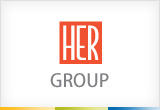GraphQL api
**Exploring GraphQL: A Modern Approach to API Development**
GraphQL, developed by Facebook, is revolutionizing API development. Unlike traditional REST APIs, GraphQL allows clients to request only the data they need, reducing unnecessary data transfer and improving performance.
**Key Concepts of GraphQL:**
1. **Schema:**
- Defines the structure of the data that can be queried through GraphQL.
- Specifies the types of data and their relationships.
2. **Queries:**
- Used by clients to request data from a GraphQL API.
- Clients specify the fields they want to retrieve, and the server returns exactly that data.
3. **Mutations:**
- Used to modify data on the server.
- Clients can create, update, and delete data using mutations.
**Advantages of GraphQL:**
- **Reduced Over-fetching and Under-fetching of Data:**
- GraphQL allows clients to request only the data they need, reducing both over-fetching and under-fetching of data.
- **Single Endpoint for All Data Requests:**
- GraphQL provides a single endpoint for all data requests, simplifying the API and making it easier to manage.
- **Strong Typing and Introspection:**
- GraphQL uses a strong type system to define the schema, providing better documentation and tooling for working with APIs.
**GraphQL in the Real World:**
- **Facebook:**
- Originally developed GraphQL to address the need for a more efficient and flexible data-fetching solution for its mobile applications.
- **GitHub:**
- Adopted GraphQL to provide a more flexible and efficient API for its platform, improving performance and reducing latency.
- **Shopify:**
- Migrated its REST API to GraphQL to provide a more efficient and flexible API for its merchants and developers.
**Conclusion:**
GraphQL is a powerful tool for building efficient and flexible APIs. By allowing clients to request only the data they need, GraphQL reduces over-fetching and under-fetching of data, leading to improved performance and reduced network usage.
To learn more about GraphQL and its benefits, check out Wallarm's comprehensive guide https://www.wallarm.com/what/what-is-graphql-definition-with-example
